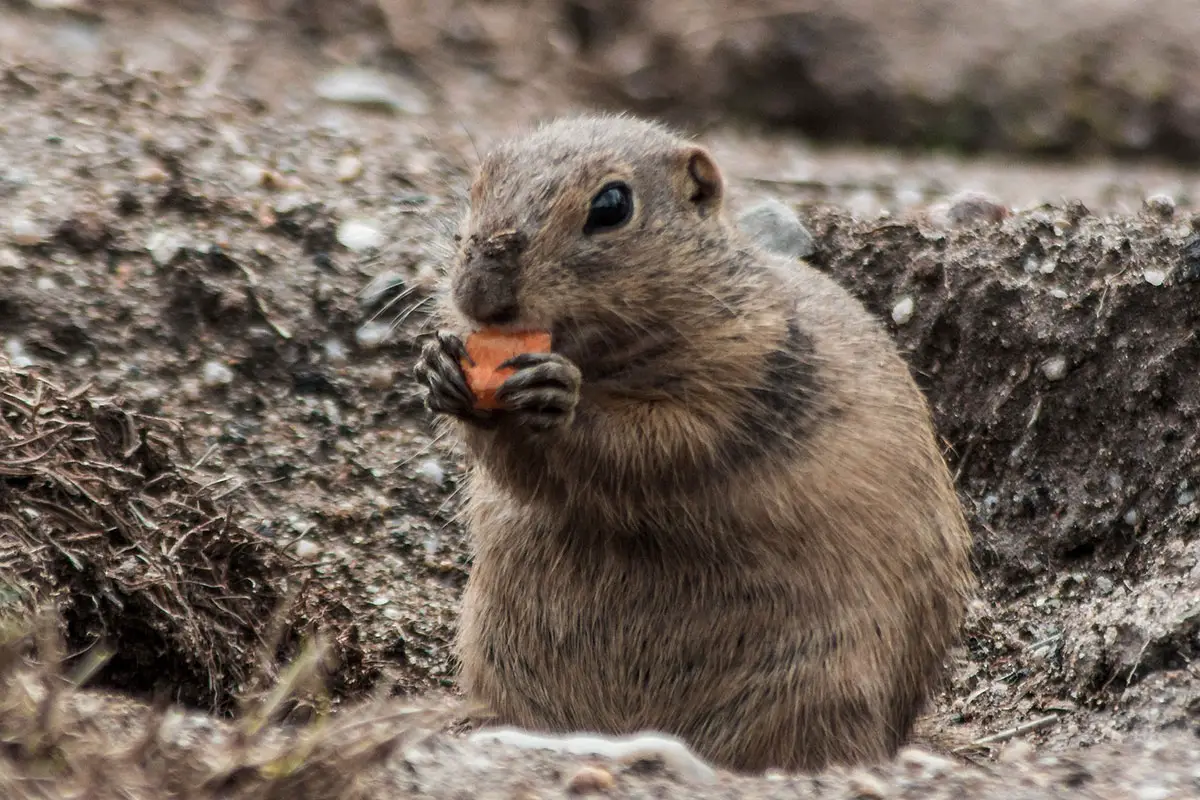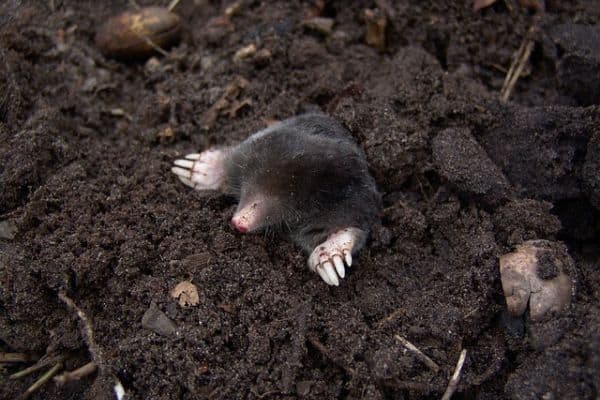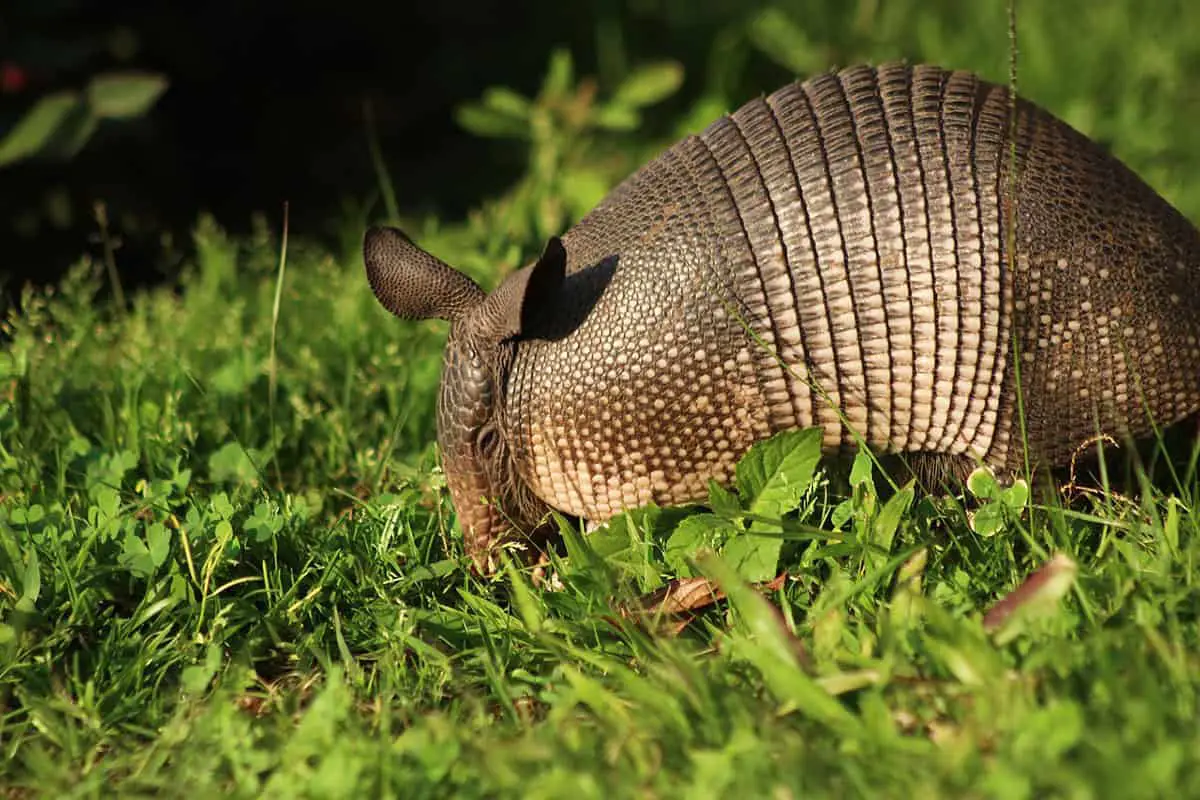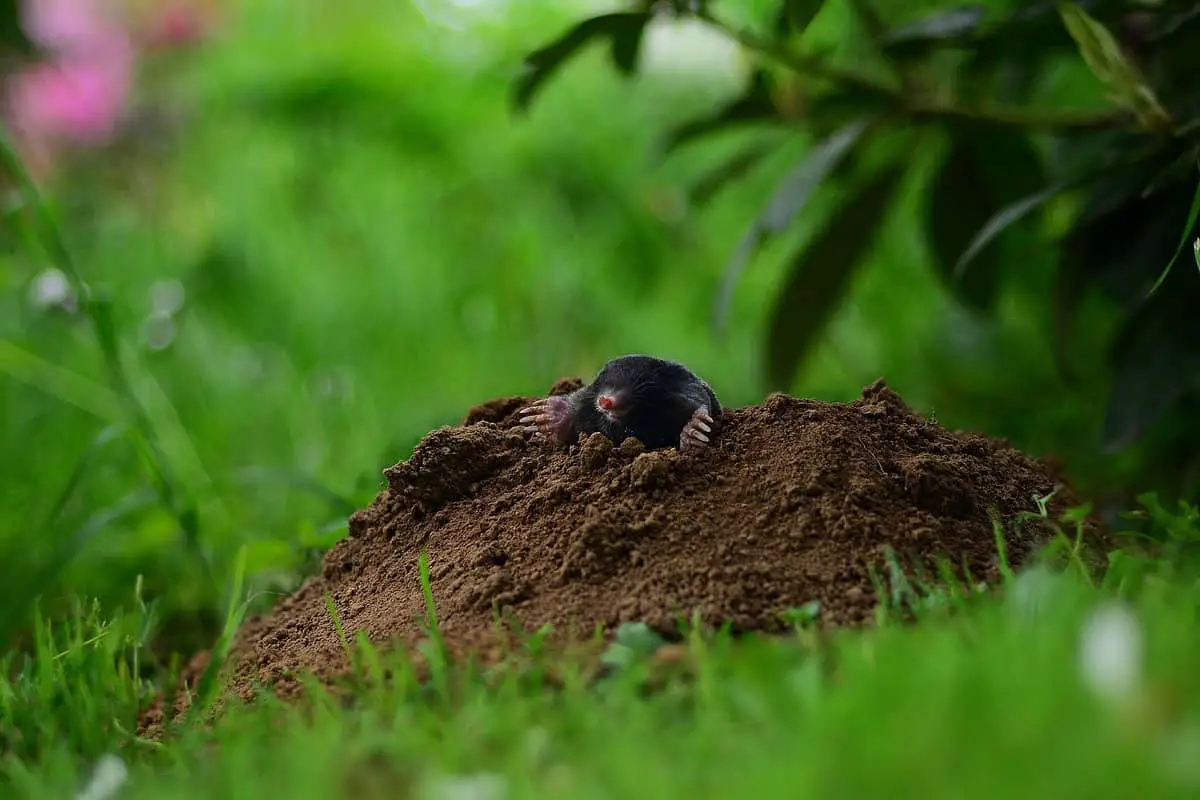This page may contain affiliate links. If you click and buy, we might get a small commission at no cost to you.
Before you can prevent animals from digging in your yard, it’s important to identify the common culprits. Knowing which animals are responsible for the holes or burrows can help you take effective action. Here’s a list of the top animals that dig holes in yards and how to recognize their burrowing habits.
1. Groundhogs

Groundhogs dig extensive burrow systems in yards, which can cause significant damage to gardens, lawns, and even structures. You can tell it’s a groundhog burrow by the large, round hole about 10 to 12 inches in diameter, often surrounded by a mound of excavated soil. These burrows usually have multiple entrances and are often located near food sources like vegetable gardens.
2. Moles

Moles dig extensive underground tunnels. While having a mole in your yard means you have rich, healthy soil, their tunnels can absolutely ruin your lawn and garden. You can recognize mole activity by the molehills they leave, which are small mounds of soil pushed up from below the surface.
They will also leave snake-like tunnels just below the surface that can be seen as pushed up soil that doesn’t break the surface.
3. Skunks

Skunks dig up yards at night while searching for insects and grubs. They are precise diggers and will leave behind small, cone-shaped holes. You can tell it’s a skunk by these small, shallow holes, usually about 3 to 5 inches in diameter, scattered across your lawn. These holes are often found in clusters where skunks have been actively foraging.
4. Raccoons

Raccoons can cause significant damage in your yard, including digging holes between 3 to 10 inches wide. They are nocturnal animals that will also flip over entire sections of turf in search of grubs and insects. You can recognize raccoon activity by the widespread damage, overturned soil or sod, and holes that appear randomly throughout your yard.
5. Rabbits

Rabbits dig burrows to create nests for sleeping or hiding from predators. They’ll also eat your flowers and vegetables for food. You can tell it’s a rabbit burrow by the round holes, typically 4 to 6 inches in diameter, often found near gardens, shrubbery, or other cover. These burrows are usually shallow and can be identified by the presence of rabbit tracks and droppings nearby.
6. Rats
Rats dig holes to travel underground, escape predators, or reach food sources. You can recognize rat holes by their location under bushes or near dense vegetation, and they often leave greasy residues around the entrance. Rat burrows are typically about 2 to 3 inches in diameter and can be found along building foundations, under debris, or in overgrown areas.
7. Armadillos

Armadillos dig for insects and grubs, creating small, shallow holes. You can tell it’s an armadillo by these holes, usually about 3 to 5 inches wide, and the presence of multiple small holes in close proximity.
Armadillo burrows are often found in loose or sandy soil, near water sources, and can be identified by their distinctive claw marks around the edges.
8. Voles

Voles create small, round holes and runways in the grass as they tunnel just beneath the surface. You can recognize vole activity by these small holes, usually around 1 to 2 inches in diameter, and the narrow, surface-level runways through the lawn. Vole runways are often visible as beaten-down paths in the grass, especially after snow melts in the spring.
9. Gophers

Gophers create mounds of dirt and plug their holes with soil, leaving crescent or fan-shaped mounds on the surface. You can tell it’s a gopher by these distinctive mounds and the entrance holes, which are typically about 2.5 to 3.5 inches in diameter. Gopher burrows are extensive and can cause significant damage to gardens and lawns.
10. Squirrels

Squirrels dig small holes to bury and retrieve nuts. You can recognize squirrel activity by the shallow holes, about 1 to 2 inches in diameter, scattered throughout the yard. These holes are usually not clustered together and can be found near trees or in garden areas where squirrels are active.
11. Chipmunks

Chipmunks dig burrows that can be up to 3 inches in diameter, often near structures or in gardens. You can tell it’s a chipmunk burrow by the small piles of dirt near the entrance and the presence of one main entrance with several hidden exits. Chipmunk burrows are typically well-hidden under rocks, logs, or dense vegetation.



